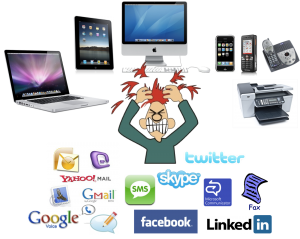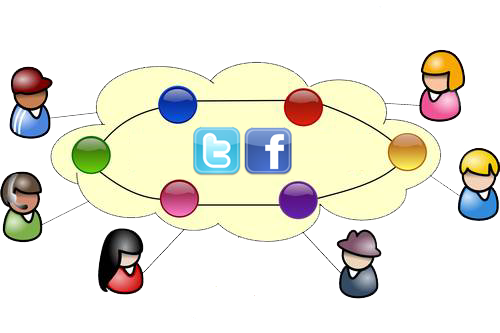 Have you noticed that the more means of communications we have, it appears as though we might be communicating less? To illustrate the problem, I created a list of my communication patterns.
Have you noticed that the more means of communications we have, it appears as though we might be communicating less? To illustrate the problem, I created a list of my communication patterns.
Let’s begin with the devices I use:
- My mobile phone – an iPhone – on me all the time. Charged at night on my bedside, but silent and on my belt all day. It’s connected to the Internet but only when I am traveling domestically (otherwise, it’s occasionally connected on WiFi). Loaded with over 200 apps, including Mail, Skype, Twitter, Facebook, LinkedIn, Viber and many more communication apps. The phone has a voice mail that I check rarely – about once a month! Continue reading Communication Chaos! →

 This blog post is going to be a little bit different than the past few posts. This time, I really need your ideas about a topic that’s been on my mind for a while. I’m just going to tee up the discussion and ask you all to help with ideas.
This blog post is going to be a little bit different than the past few posts. This time, I really need your ideas about a topic that’s been on my mind for a while. I’m just going to tee up the discussion and ask you all to help with ideas.
I’ve been giving a lot of thought to the tsunami of social media, and in particular, that of social communications, and its impact on communication service providers – in particular, on fixed line and mobile operators. Social communications are the communications facilitated by social media, especially in the form of Facebook and Twitter, but also LinkedIn, YouTube, blogs and talkbacks. While social media impacts all businesses – which I’ll touch on briefly – the sector which is most affected by social media is the communication service providers whose core business is providing means of communications and connectivity, mostly paid services. Social communications are obviously competing with and are possibly disruptive to the business of communication service providers. With this in mind, I pose the following question:
What should communication service providers do in order to mitigate the impact or even benefit from the evolution of social communications?
Tal Givoly on Internet, gadgets, health, communications, entrepreneurship, innovation, consumer electronics and more!
 Have you noticed that the more means of communications we have, it appears as though we might be communicating less? To illustrate the problem, I created a list of my communication patterns.
Have you noticed that the more means of communications we have, it appears as though we might be communicating less? To illustrate the problem, I created a list of my communication patterns.
 This blog post is going to be a little bit different than the past few posts. This time, I really need your ideas about a topic that’s been on my mind for a while. I’m just going to tee up the discussion and ask you all to help with ideas.
This blog post is going to be a little bit different than the past few posts. This time, I really need your ideas about a topic that’s been on my mind for a while. I’m just going to tee up the discussion and ask you all to help with ideas.